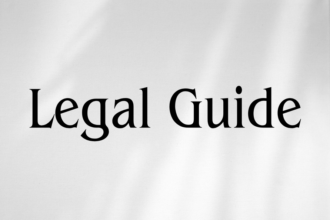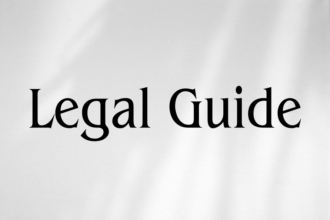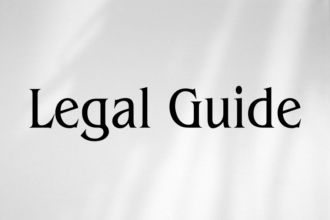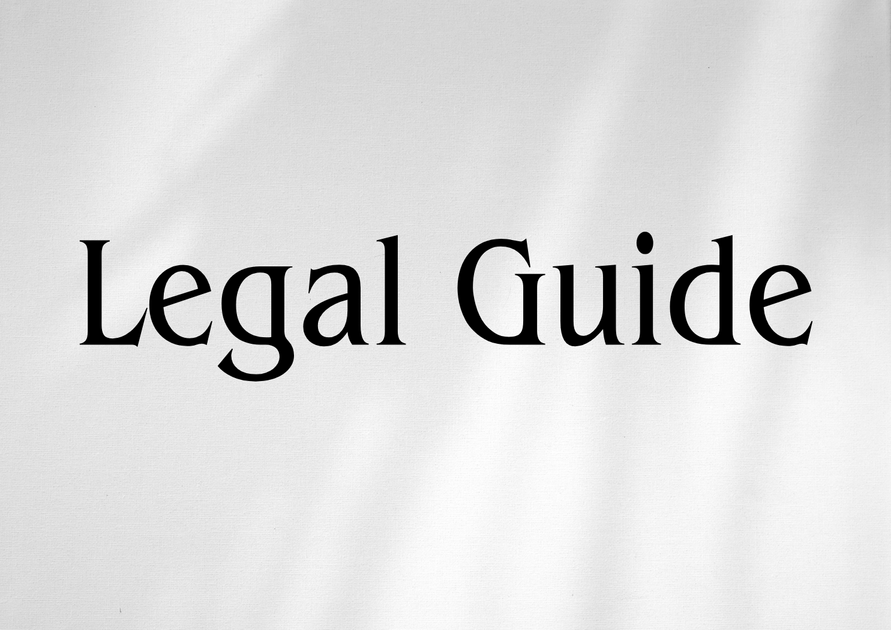Introduction to Legal Challenges of AI in the UAE
The rapid adoption of artificial intelligence (AI) in creative and commercial work has fundamentally changed how businesses operate worldwide. In the United Arab Emirates (UAE), the intersection of cutting-edge digital technology and evolving legal frameworks presents both remarkable opportunities and unprecedented challenges. With the UAE government’s ongoing commitment to digital transformation—epitomized by Vision 2031, the National Artificial Intelligence Strategy, and recent legislative reforms—understanding the legal risks inherent to AI tools is not only prudent but critical for any organization or professional operating in the Emirati market.
This comprehensive briefing is tailored for business owners, corporate executives, HR leaders, and legal practitioners seeking clarity on how recent UAE legal developments impact the use of AI in creative and commercial activities. Drawing on official sources such as the Federal Legal Gazette and Ministry of Justice, we examine how new and updated legislation shapes responsibilities, compliance expectations, and potential liabilities associated with AI-powered tools. Our objective is to provide actionable guidance, risk mitigation strategies, and forward-looking insights to help clients and practitioners position themselves for sustainable success in the evolving regulatory landscape of the UAE.
Table of Contents
- UAE Legal Context and AI Trends for 2025
- Key UAE Laws and Regulations Governing AI Use
- Copyright, IP, and AI-Generated Works
- AI, Data Protection, and UAE Data Privacy Law
- Contractual Liabilities and Risk Allocation in AI Deployment
- Compliance Planning and Risk Mitigation for Organizations
- Case Studies and Hypothetical Scenarios
- Conclusions and Future Outlook
UAE Legal Context and AI Trends for 2025
Digital Transformation and Legislative Innovation
The UAE has set an ambitious agenda for establishing itself as a global leader in AI and digital economy. As AI applications increasingly influence commercial and creative industries, the legal system has responded with reforms—such as Federal Decree-Law No. 34 of 2021 on Combatting Rumours and Cybercrimes, recent amendments to the Copyright Law (Federal Law No. 38 of 2021), and Federal Decree-Law No. 45 of 2021 regarding Personal Data Protection. These statutes aim to balance the imperative of innovation with robust legal safeguards for businesses and individuals.
Why Legal Risks Have Intensified
- Rapid emergence of generative AI tools (e.g., artwork, text synthesis, music composition)
- Complexity around ownership, copyright, and licensing of AI-generated outputs
- Potential for misuse or infringement of third-party IP rights
- Stricter data privacy and cybersecurity laws with extraterritorial reach
- Increasing regulator scrutiny and potential for severe penalties
Understanding this convergence of legal frameworks and technological advancement is essential for achieving compliance and minimizing exposure to lawsuits, financial losses, or reputational harm.
Key UAE Laws and Regulations Governing AI Use
An Overview of Core Legal Instruments
| Legal Instrument | Scope (AI Relevance) | Key Provisions | Effective Date |
|---|---|---|---|
| Federal Decree-Law No. 34 of 2021 | Cybercrime, Electronic Evidence | Prohibits unauthorized access/use of digital content and data; criminalizes cyber infractions | Jan 2022 |
| Federal Law No. 38 of 2021 | Copyright & IP | Addresses protection/ownership of copyrighted works, incl. digital & AI-generated content | Jan 2022 |
| Federal Decree-Law No. 45 of 2021 | Personal Data Protection | Regulates collection, processing, transfer, and storage of personal data, incl. AI processing | Jan 2022 |
| Cabinet Resolution No. 21/2022 | Open Data & AI Policy | Sets requirements for transparency, accountability, and ethical AI deployment in business | Apr 2022 |
These legislative instruments form the backbone of AI governance in the UAE, directly impacting how both domestic and international organizations deploy and manage AI tools in commercial and creative contexts.
Comparative Developments: Old versus New Laws
| Area | Old Regime | New Regime (2021+) |
|---|---|---|
| Copyright/IP | Limited recognition of digital/AI works | Explicit inclusion of digital, algorithmically generated works |
| Data Protection | Fragmented, sector-specific rules | Unified, GDPR-style requirements & extraterritorial enforcement |
| Cybercrime | Narrow scope; outdated provisions | Broadened scope, stronger penalties, AI-specific risks covered |
These reforms close many legal gaps, but they also introduce new duties of diligence and compliance—especially where AI is involved in content creation, automated decision-making, or commercial operations.
Copyright, IP, and AI-Generated Works
Understanding Ownership and Authorship in AI Contexts
One of the foremost legal questions in the AI ecosystem is the copyright status of content generated with or by AI. Under Federal Law No. 38 of 2021, copyright protection is extended to original works of authorship, now explicitly including “computer programs” and “databases”—which can encompass AI outputs. However, this law also stipulates that only works authored by humans, or at the direction of a human, generally qualify for formal protection. This raises several practical concerns:
- If an AI tool is instructed to create visual art or write marketing copy, does the copyright vest in the user (human), the developer (AI provider), or in the work at all?
- To what extent can businesses claim exclusivity or enforce rights over AI-generated assets?
- Could the use of AI produce outputs that inadvertently infringe existing works or confidentiality obligations?
Current Guidance from UAE Law and Practice
The UAE currently aligns with international best practices by allowing copyright registration for works “created with significant human authorship.” Purely machine-generated content—created without meaningful human input or creative decisions—may lack standing for protection. On the other hand, AI that augments, assists, or facilitates but does not determine the entire creative process usually allows the human user to claim copyright as the author.
Risks for Businesses Using AI Tools
- Patent and IP Infringement: AI may generate content that uses original or patented ideas without license or permission.
- Ambiguous Ownership: Joint authorship or complicated licensing schemes may arise between users, developers, and data providers.
- Challenges in Enforcing Rights: Proof of originality or authorship can be difficult when work is partially or wholly AI-derived.
- Liability for Infringement: Organizations may be exposed to lawsuits if AI-generated content mirrors third-party protected works.
Professional Recommendation: To minimize these risks, organizations should ensure their contracts with AI vendors specifically address IP assignment, clearly allocate rights and responsibilities relating to outputs, and conduct regular legal audits of AI-generated assets prior to commercial exploitation.
AI, Data Protection, and UAE Data Privacy Law
Navigating Federal Decree-Law No. 45 of 2021
With the introduction of the Federal Personal Data Protection Law (PDPL), the UAE has implemented a comprehensive legal system modeled closely on the EU’s GDPR. This has profound implications for AI use, as AI tools are typically data-hungry and often require the ingestion, processing, and analysis of substantial amounts of (often personal or sensitive) data.
Major Provisions Relevant to AI
- Strict requirements for valid consent where personal data is processed by AI algorithms
- Mandatory data protection impact assessments (DPIAs) for high-risk AI-powered activities
- Obligations to ensure transparency, fairness, and explainability of automated decisions
- Data subject rights: access, correction, erasure, objecting to automated processing
- Heavy penalties for non-compliance, including suspensions, substantial fines, and public naming by regulators
Table: Compliance Checklist for AI Data Processing (Suggested Visual)
| Requirement | Description | Practical Action |
|---|---|---|
| Consent Management | Obtain and record express consent for data use in AI tools | Update privacy policies and implement consent tools |
| DPIA | Assess risks before deploying AI for personal data | Conduct periodic DPIAs for new AI initiatives |
| Transparency | Explain logic and impact of AI processes to data subjects | Publish plain-language AI use statements |
| Data Minimization | Collect and use only necessary data for AI purpose | Limit scope of data collection and access |
| Data Security | Implement technical and organizational security measures | Deploy encryption, access controls, and monitoring |
Consultancy Guidance
Companies must ensure their deployment of AI tools for customer targeting, profiling, or workflow automation fully addresses the PDPL’s legal mandates. In addition to regulatory fines, breaches of these obligations can severely undermine stakeholder trust and brand reputation.
Contractual Liabilities and Risk Allocation in AI Deployment
Key Contractual Risks in AI Tool Procurement and Use
AI technologies are often delivered via complex contractual arrangements, including SaaS licenses, technology transfer agreements, partnerships, and outsourcing. Without robust contractual safeguards, organizations may face unanticipated legal risks.
- Unclear Scope of Use: Restrictions or ambiguities in AI tool licensing can result in unauthorized use or IP infringement.
- Indemnities and Warranties: Many AI vendors limit their liability for errors, data breaches, or infringement—leaving customers exposed.
- Sub-Contracting: AI providers may rely on third-party vendors, increasing the risk of data leakage or legal violations outside the original agreement.
- Audit and Oversight: Lack of right to audit AI deployments inhibits organizational ability to monitor compliance with applicable laws.
Essential Provisions for AI Contracts
- Explicit definition of ownership and licensing of all outputs generated by the AI
- Clear acceptance of liability and indemnity obligations for misuse or failure of the AI
- Stipulation for regular joint legal reviews and compliance checks
- Data protection clauses aligning with UAE PDPL requirements
- Provisions for immediate remedial action in case of regulatory breach
Table: Sample AI Contractual Risk Matrix (Suggested Visual)
| Risk Type | Potential Impact | Mitigation Strategy |
|---|---|---|
| IP Ownership | Loss of control over creative assets | Negotiate explicit output ownership clauses |
| Data Breach | Heavy fines, reputational harm | Mandate security measures, require breach notifications |
| Unclear Rights | Infringement, unusable outputs | Seek warranties against infringement from vendors |
| Sub-Processor Use | Loss of regulatory control | Require approval, flow down compliance duties |
Professional legal review of all AI contracts is a prudent best practice to detect and defuse these risks before commercial deployment.
Compliance Planning and Risk Mitigation for Organizations
Building a Legally Robust AI Governance Program
In 2025 and beyond, organizations in the UAE should proactively design their AI strategies and operational policies with legal compliance at the forefront. Sound governance involves multi-departmental collaboration, periodic risk assessments, and a clear culture of accountability.
Key Steps for Effective Legal Compliance
- Legal Readiness Assessment: Map all AI projects and tools in use, identifying potential legal touchpoints and exposure to liability under recent UAE laws.
- Update Internal Policies: Revise data protection and IP management policies to reflect AI-specific risks and delegate compliance roles.
- Stakeholder Education: Provide mandatory legal training for teams utilizing or managing AI.
- Contract Management: Continuously monitor, review, and update contracts with AI vendors to ensure on-going legal compatibility.
- Incident Response Protocols: Prepare rapid response frameworks for legal breaches, including notification, investigation, and mitigation.
Suggested Visual: Compliance Process Flowchart
(Recommended insertion of a visual: A process flowchart outlining AI risk assessment, policy review, contract vetting, compliance training, and incident handling steps.)
Regulatory Reporting and Engagement
Given the active enforcement trend by the UAE Data Office and sectoral regulators, organizations should establish procedures for interacting with regulators, handling investigations, and reporting any legal or security incidents in a timely manner. Proactive engagement can reduce penalties and build institutional credibility.
Case Studies and Hypothetical Scenarios
Case Example 1: Marketing Firm Utilizing AI-Generated Copy
Scenario: A Dubai-based marketing agency deployed an AI-powered copywriting application to generate slogans and promotional content for ecommerce clients. Shortly after launch, the campaign received a legal warning from a competitor alleging copyright infringement, as the AI-generated taglines bore strong similarity to an existing, protected campaign.
Legal Analysis: Under Federal Law No. 38 of 2021, both the agency (as user) and its end-client could face liability for infringement, regardless of their intent. Failure to verify the originality of AI-generated content and document the human creative contribution can trigger financial penalties and loss of client trust.
Case Example 2: Data Privacy Breach Due to AI Chatbot
Scenario: A fintech platform integrated an off-the-shelf AI chatbot to automate customer support, but did not notify users that chat interactions would be stored and analyzed for model improvement by the external AI vendor. A customer complaint triggered a regulatory inquiry under the PDPL.
Legal Analysis: The company’s failure to secure explicit consent and disclose third-party processing exposed it to potential administrative sanctions and mandatory public disclosure. This case underscores the critical importance of compliance with data privacy notification and consent requirements under Decree-Law No. 45 of 2021.
Case Example 3: AI in HR and Automated Employment Decisions
Scenario: An HR department launched an AI-enabled applicant screening system, resulting in several claims of discrimination due to unintentional bias embedded in the selection algorithm. This prompted an official complaint and a Ministry of Human Resources and Emiratisation review.
Legal Analysis: Both Federal Decree-Law No. 34 of 2021 and emerging best practices require companies to justify the logic behind AI-driven employment decisions. Lack of explainability and transparency can lead to claims under labor and anti-discrimination statutes, with reputational and financial repercussions.
Conclusions and Future Outlook
The evolution of legal frameworks governing AI use in the creative and commercial sectors represents both a safeguard and a challenge for UAE organizations. Strict obligations under new federal laws—covering copyright, data protection, and digital conduct—demand a proactive, informed, and well-documented approach to leveraging AI technologies. The penalties for noncompliance can be significant, but so too are the opportunities for those who establish robust governance programs and prioritize legal best practices from the outset.
Key Takeaways and Best Practices:
- Audit all AI-driven processes for compliance with updated UAE laws and global best practices.
- Secure written, enforceable agreements clarifying copyright, IP, data handling, and liability in every AI deployment.
- Embed legal, HR, and compliance expertise within AI project teams for ongoing oversight.
- Invest in regular training and readiness assessments as AI regulations continue to evolve.
- Engage transparently with regulatory bodies and seek advance legal guidance for new AI initiatives.
As the regulatory landscape matures, organizations that act early to align with these new requirements will enjoy a durable competitive advantage, enhanced stakeholder confidence, and enduring legal resilience. Staying informed and proactive is essential for futureproofing business operations in the UAE’s AI-driven economy.




